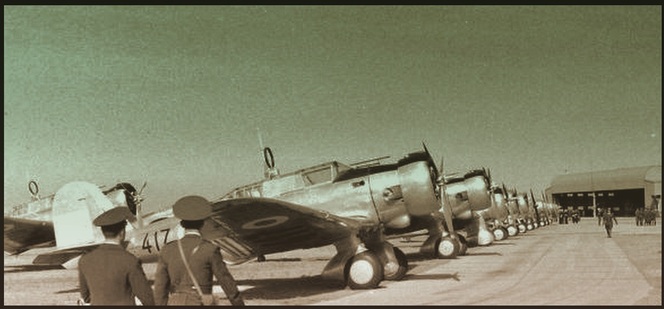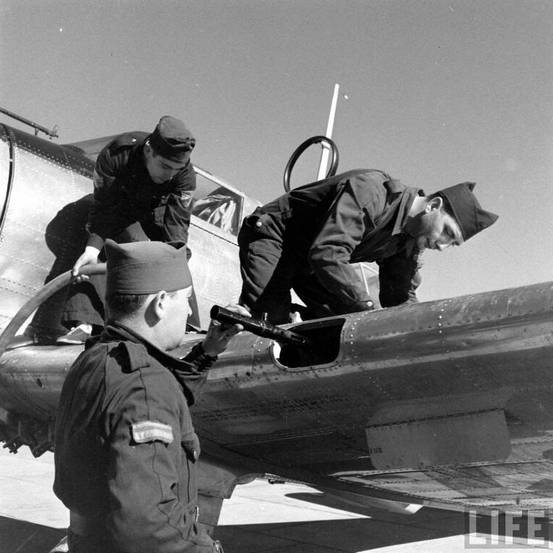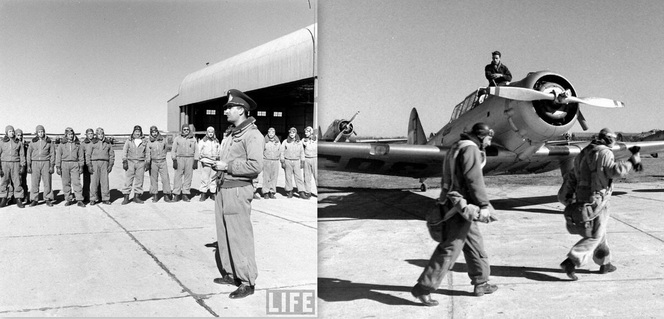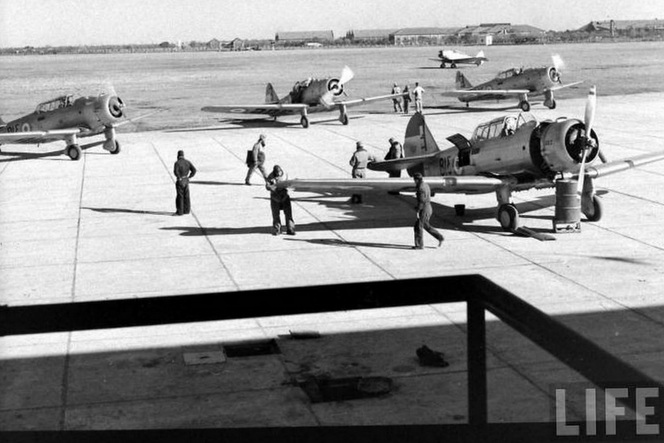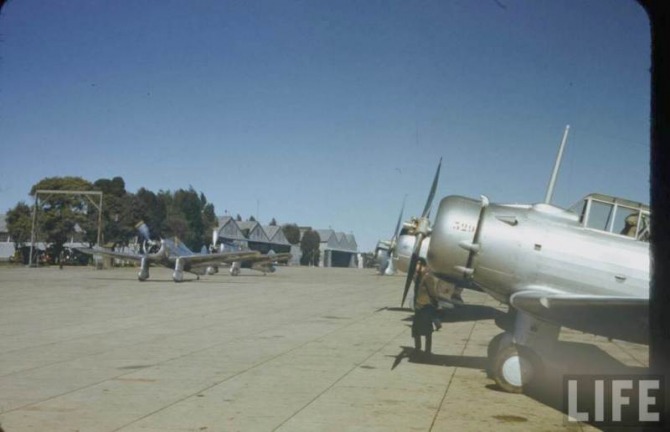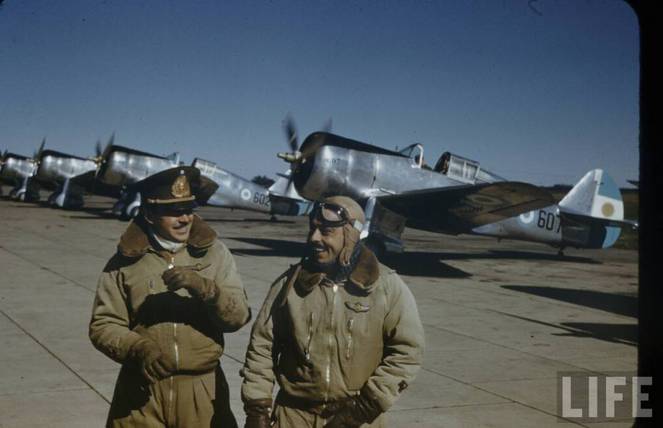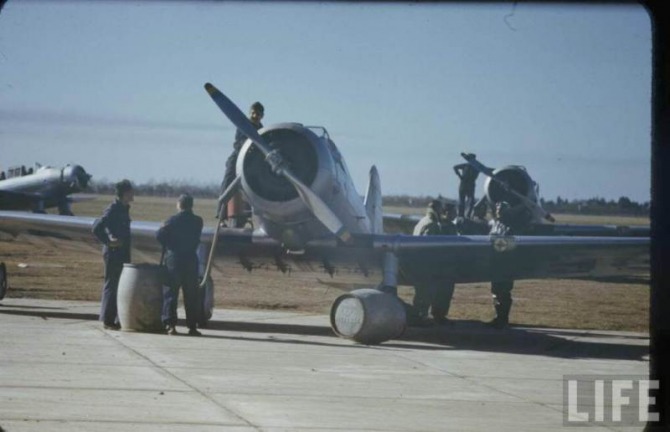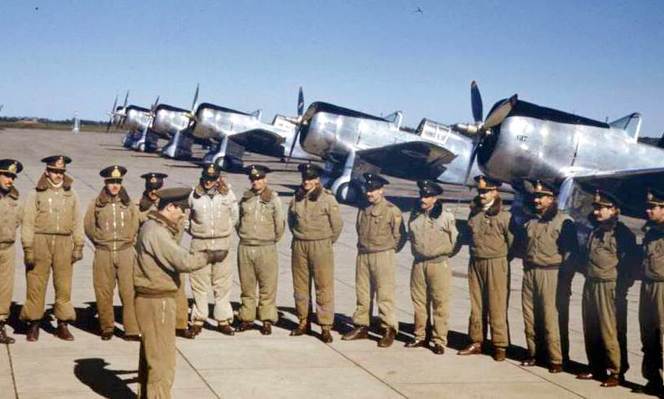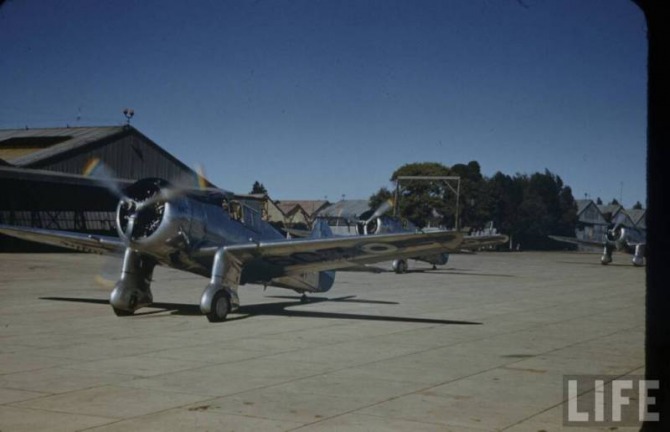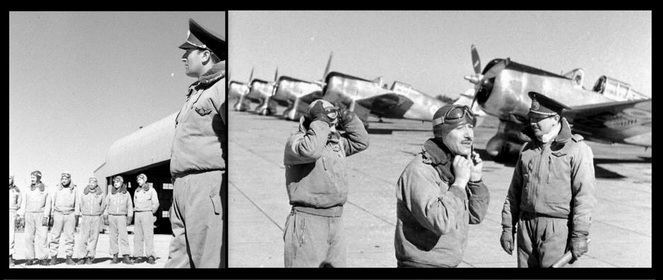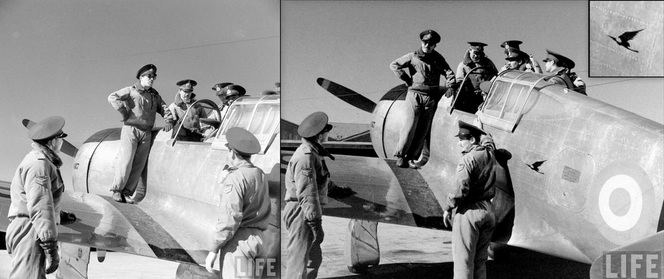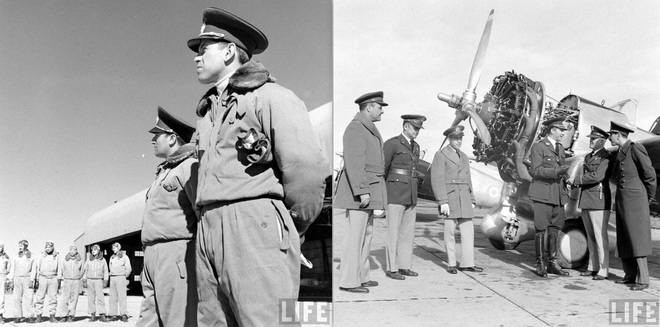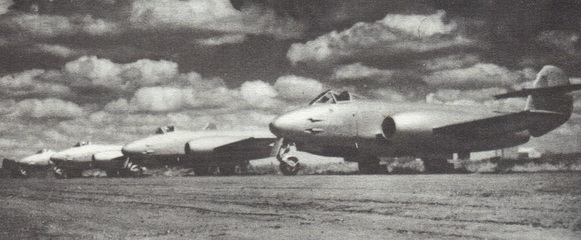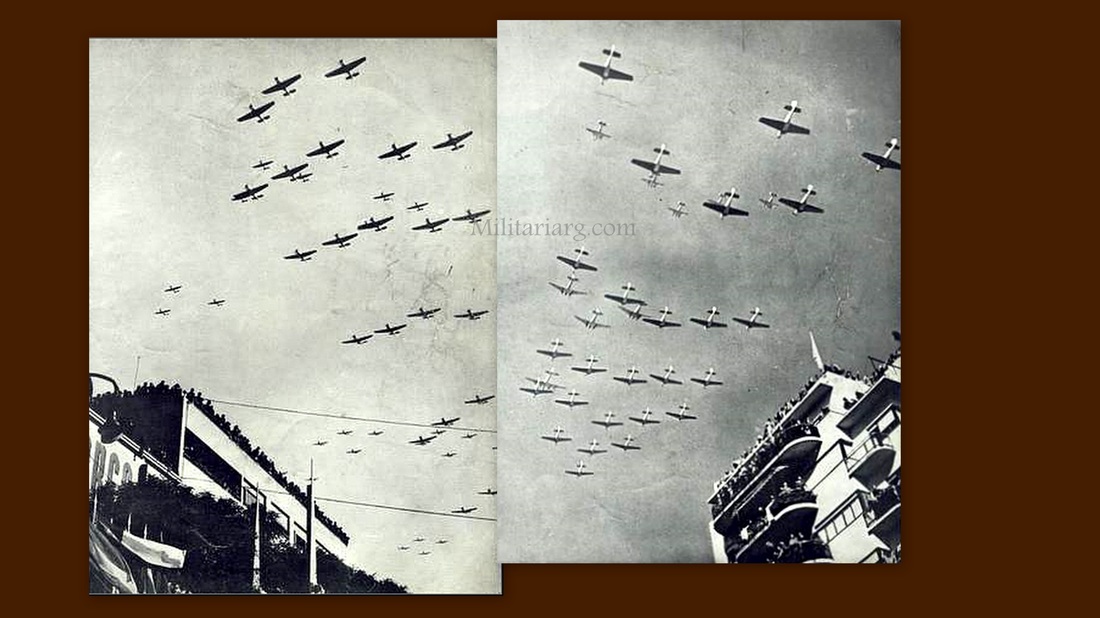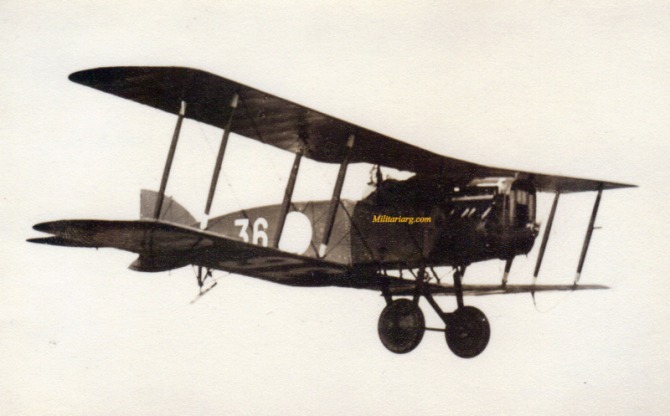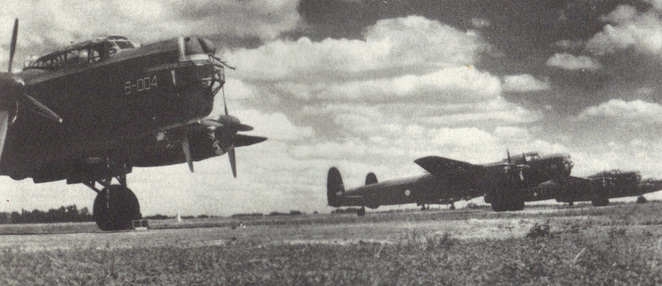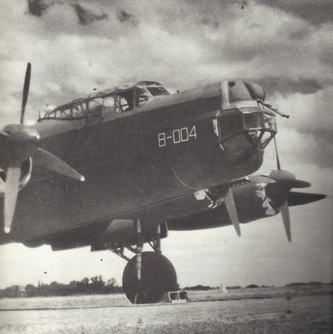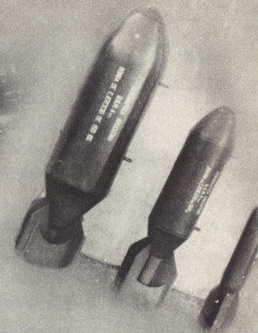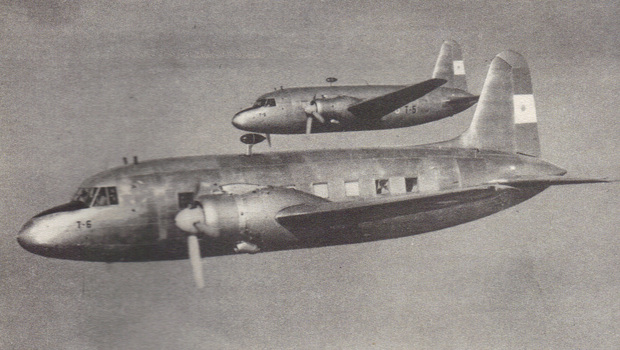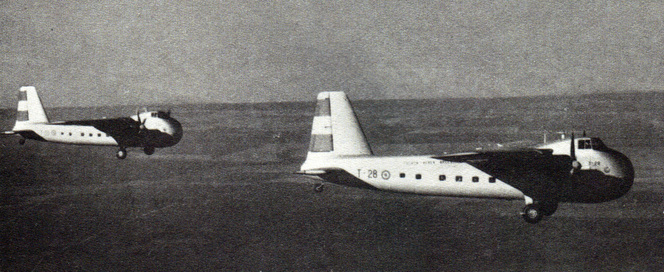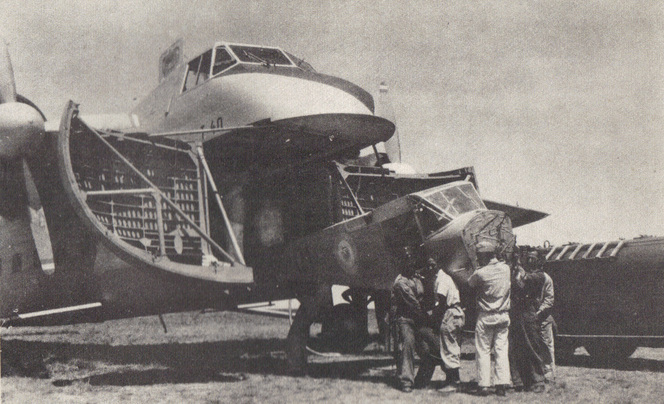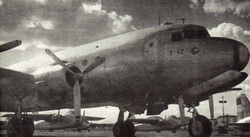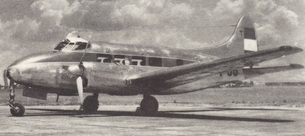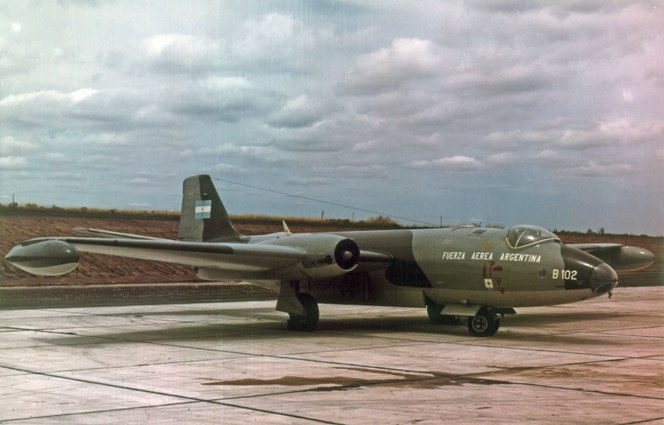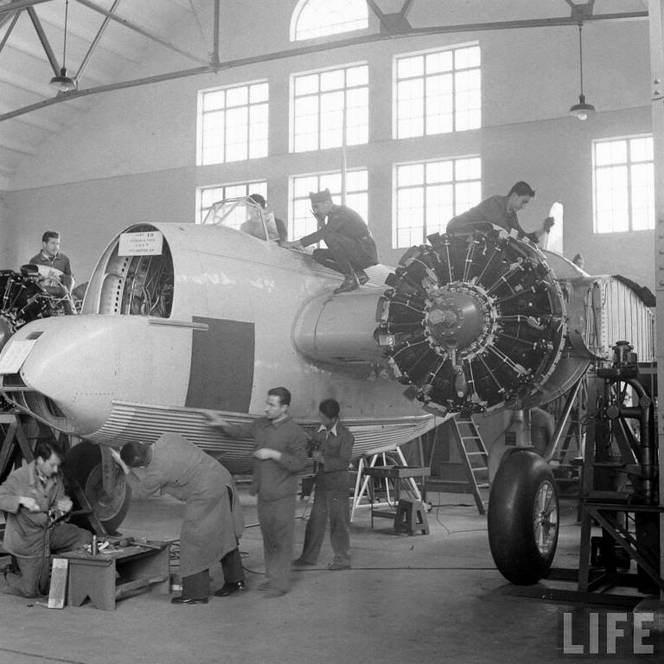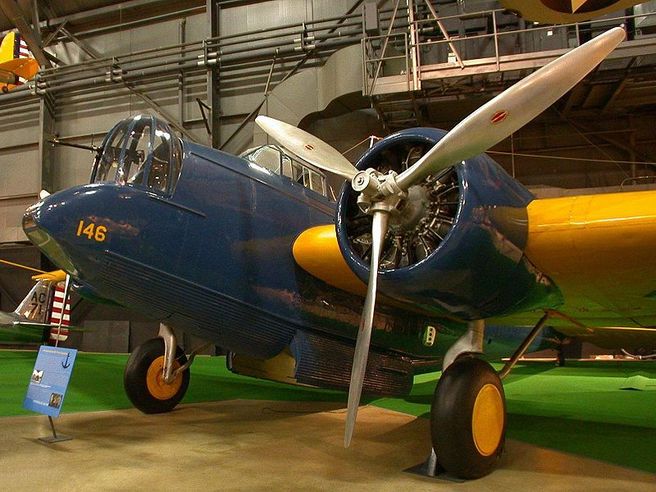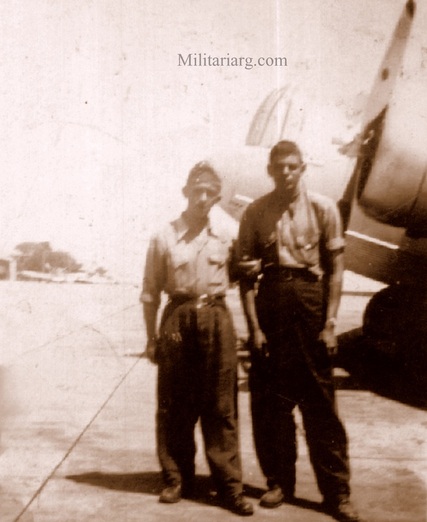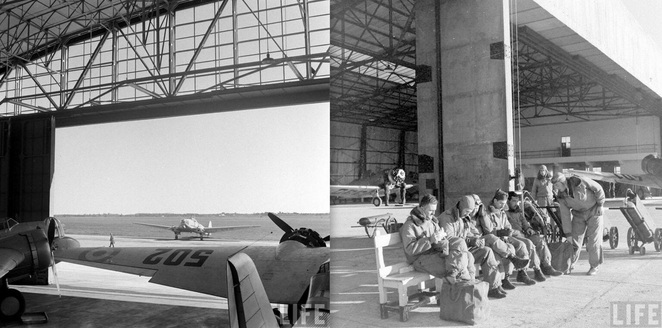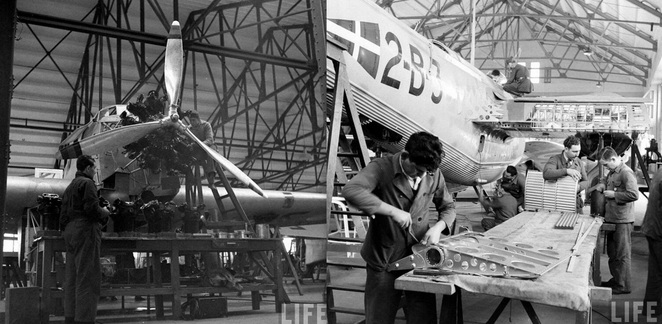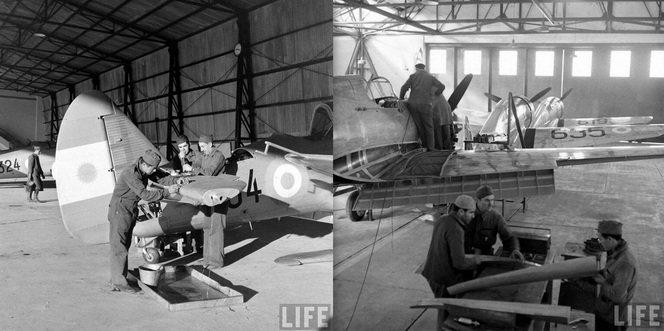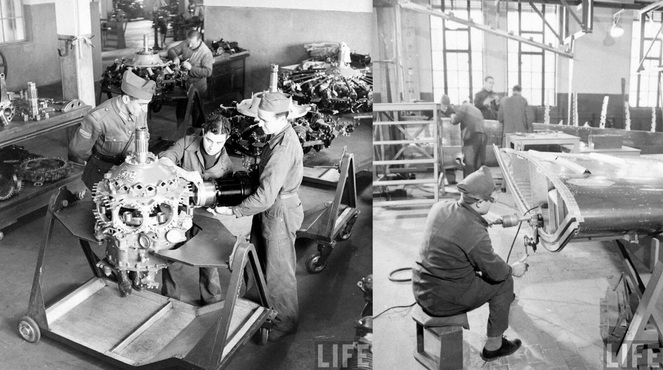North American Northrop 8A-2. Photo LIFE Magazine.
Northrop Model 8A-2
Model 8A-2 Version for Argentina. Fitted with fixed undercarriage, ventral gun position and powered by 840 hp (626 kW) Wright R-1820-G3 Cyclone. 30 built. The Northrop A-17, a development of the Northrop Gamma 2F was a two seat, single engine, monoplane, attack bomber built in 1935 by the Northrop Corporation for the US Army Air Corps. Wikipedia.
Wright Cyclone R-1820-E. Smithsonian Air Space Museum. D.C.
North American NA-16
Curtiss Hawk 75 H
The North American Aviation NA-16 was the first trainer aircraft built by North American Aviation, Inc. and was the beginning of a line of North American trainer aircraft that would number more than 17,000 examples.
Developed into North American BT-9
T-6 Texan
North American P-64
CAC Wirraway
The NA-16 was a single engine, low-wing monoplane with tandem seating in open cockpits and fixed landing gear. A Wright Whirlwind radial air-cooled engine of 400 hp powered the aircraft. While it was mostly of metal construction, the rear fuselage was fabric covered.
The NA-16 flew for the first time on 1 April 1935, and was submitted to the United States Army Air Corps for evaluation as a basic trainer. The Army accepted the trainer for production but with some significant changes. These changes included replacing the Wright engine with a Pratt & Whitney R-1340, and enclosing the cockpits as well as fairing the landing gear. The modified NA-16 was re-designated by North American as the NA-18, with production examples entering Air Corps service as the North American BT-9 (NA-19).
In Australia, the Commonwealth Aircraft Corporation produced 755 units of a modified version of the NA-16 known there as the Wirraway between 1939 and 1946.
Two NA-16 trainers were supplied to the Imperial Japanese Navy Air Service for evaluation, designated KXA1 and KXA2, in 1938.
Wikipedia.
Developed into North American BT-9
T-6 Texan
North American P-64
CAC Wirraway
The NA-16 was a single engine, low-wing monoplane with tandem seating in open cockpits and fixed landing gear. A Wright Whirlwind radial air-cooled engine of 400 hp powered the aircraft. While it was mostly of metal construction, the rear fuselage was fabric covered.
The NA-16 flew for the first time on 1 April 1935, and was submitted to the United States Army Air Corps for evaluation as a basic trainer. The Army accepted the trainer for production but with some significant changes. These changes included replacing the Wright engine with a Pratt & Whitney R-1340, and enclosing the cockpits as well as fairing the landing gear. The modified NA-16 was re-designated by North American as the NA-18, with production examples entering Air Corps service as the North American BT-9 (NA-19).
In Australia, the Commonwealth Aircraft Corporation produced 755 units of a modified version of the NA-16 known there as the Wirraway between 1939 and 1946.
Two NA-16 trainers were supplied to the Imperial Japanese Navy Air Service for evaluation, designated KXA1 and KXA2, in 1938.
Wikipedia.
Curtiss Hawk 75
Gloster Meteor F4
100 were exported to Argentina (and saw action on both sides in the 1955 revolution, one being lost on 19 September 1955.
Argentine Air Force ordered 50 F.4s in May 1947, comprising 50 ex-RAF aircraft and 50 newly built, Deliveries started in July that year,the Meteor remaining in service until 1970, when the last examples were replaced by Dassault Mirage IIIs.
Argentine Air Force ordered 50 F.4s in May 1947, comprising 50 ex-RAF aircraft and 50 newly built, Deliveries started in July that year,the Meteor remaining in service until 1970, when the last examples were replaced by Dassault Mirage IIIs.
Bristol F.2B
Military and civilian aircraft in 1948. Source: "La Aeronautica Nacional al servicio del pais"
Avro-Lancaster
Cargo Aircraft Vickers "Vickings"
Bristol Type 170 Freighter
Canberra Mk 62
Survivors models
Argentine Air Force received 27 Model 139W/WAA aircraft.
The only surviving complete B-10 is on display at the National Museum of the United States Air Force at Wright-Patterson Air Force Base near Dayton, Ohio. The aircraft is painted as a B-10 used in the 1934 Alaskan Flight. It was an export version sold to Argentina in 1938.
The aircraft survived as a ground crew trainer, and was still being used by the Argentine Air Force for training its ground crews as late as the 1960s. The Air Force Museum conducted an exhaustive search for any surviving B-10 remains, and eventually learned of the aircraft. In 1970, the incomplete airframe was donated by the Government of Argentina to the U.S. Government in a formal ceremony attended by the U.S. ambassador.
The aircraft was restored by the 96th Maintenance Squadron (Mobile), Air Force Reserve, at Kelly Air Force Base, Texas, in 1973-1976, and placed on display in 1976.
Wikipedia
The aircraft survived as a ground crew trainer, and was still being used by the Argentine Air Force for training its ground crews as late as the 1960s. The Air Force Museum conducted an exhaustive search for any surviving B-10 remains, and eventually learned of the aircraft. In 1970, the incomplete airframe was donated by the Government of Argentina to the U.S. Government in a formal ceremony attended by the U.S. ambassador.
The aircraft was restored by the 96th Maintenance Squadron (Mobile), Air Force Reserve, at Kelly Air Force Base, Texas, in 1973-1976, and placed on display in 1976.
Wikipedia
